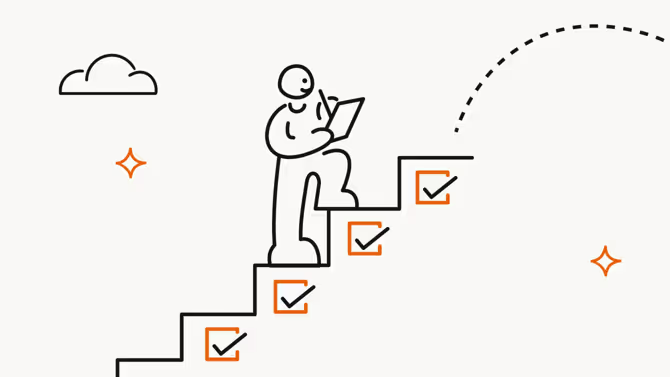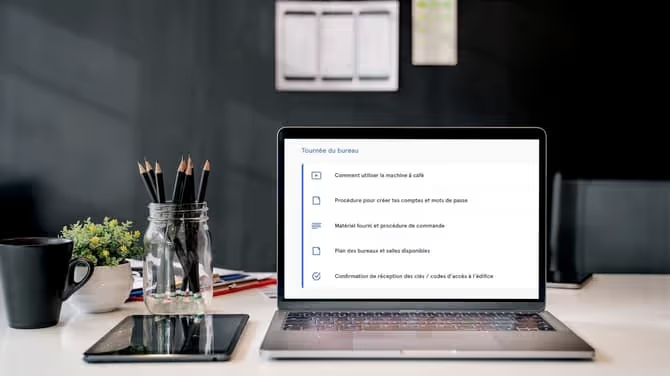Goodbye spreadsheets: Rethinking your onboarding process in a more human way

Streamline, organize, and automate your onboarding process like magic.

We cannot emphasize the importance of onboarding enough. And while we’ve covered the importance of investing in a solid onboarding strategy and how that can benefit your corporate brand and improve your bottom line, we have not yet dived into how to go about it best. We’re talking about the tools that will properly capture your onboarding process and help you achieve your desired results.
Changing times calls for changing our ways for the better
The workplace is an entirely different environment today compared to 10 years ago. For most, the “office” is now a virtual ecosystem in which colleagues connect with each other from home through a laptop. But as unrecognizable as our professional worlds have become, our need for connection hasn't changed. We would argue it’s only grown.
How we approach our employees now needs to translate remotely, but it also needs to feel human, even more so than before. Our old ways of working, heavy with paperwork and one-dimensional, must be refreshed with forward-thinking methods so your new employees can start off the right way from day one.
In 2022, there are no excuses! It’s not like the tools don’t exist — we know because we invented one!
Spreadsheets: Why they don’t work for employee onboarding
Let’s make something clear: we love spreadsheets. Just not for onboarding new employees. They are a great tool for capturing, displaying and manipulating data in an organized fashion, but they don’t offer much engagement, interactivity, or automation. When 1 out of 25 employees report leaving their company due to substandard onboarding experiences — it’s time to up your game.
Decrease your administrative efforts (and save time!)
Spreadsheets are basic in functions compared to the other great tools available on the market that offer onboarding solutions.
They can help you plan with filtered lists and even help you map out a timeline (if you’re good at formatting), but they’re limited in terms of creating a workflow that integrates other tools and platforms your onboarding process needs to include.
Even with a well-thought-out spreadsheet, you still have to save other essential onboarding documents, like HR forms and reading materials, somewhere else and provide separate instructions to find them. And you would still have to manually schedule onboarding meetings, check-ins, and reminders, as well as assign tasks outside of your spreadsheet. And you would still need to offer a separate means of communication, such as a chat tool, for peers to connect. Lastly, each new spreadsheet starts as a blank canvas — you have to start from scratch every single time.
Fool-proof flexibility and automation
You need an onboarding method that allows you to be flexible and saves you from making mistakes. Spreadsheets are very manual, so if you need to make one change, you must align everything else accordingly for your onboarding timeline to line up.
When too many manual changes are required to personalize onboarding plans, data corruption can be costly. For example, it is too easy for a collaborator to change the contents of one cell or adjust one formula and accidentally delete something important without realizing it. Or, with standard file sharing, spreadsheets can be duplicated, and the wrong version can get saved and used instead.
You’ve probably already experienced making these mistakes, and the risks of repeating them are not worth it.
Capitalize on first impressions
The data-focused nature of spreadsheets doesn’t offer much interactivity and engagement. New employees need to feel excited about the onboarding plan they are given at the start of their employment. There is a real opportunity for employers to capitalize on the “first impressions last” phenomenon. Do you want to be seen as a company offering a run-of-the-mill, bland approach to welcoming employees? Or do you want to be seen as an organization that stands out from the rest?
If you can WOW your new hires from day one with a structured onboarding experience that captures their attention, they are 69% more likely to stay at your company for at least 3 years.
Remote and hybrid work requires more creativity
The onboarding process needs a reshuffle with remote and hybrid work dynamics becoming the norm. Modern onboarding needs to meet the needs of today’s higher standards of virtual interactivity while compensating for the lack of organic human connection a physical office provides.
The cost of loss in human connection is hard to calculate in real terms, but the cultural connection is at risk. Although there are many ways to counteract this — all it takes is creativity and care.
A few ideas complementary to onboarding:
- Organizing virtual coffee chats
- Using video platforms with breakout rooms
- Investing in on-demand feedback solutions
- Allocating a budget for employees to upgrade their home offices
Swapping spreadsheets for memorable experiences — with the right tools
Onboarding should be more than just paperwork — it should be an experience that flows and feels human. Sorry spreadsheets: onboarding is about presenting data within a more meaningful context.
Working smarter: Consolidating your onboarding process
For example, you might have onboarding tasks that require booking people. Spreadsheets don’t link to email calendars, so finding availabilities and booking time is painfully manual. The right onboarding tool could simplify and automate this process, making planning and booking a meeting a one-step action.
Another example: Designing a plan that allocates time for training and provides the reading materials for training should be the same. It seems simple enough, but new employees can spend up to 1/5 of their time looking for documents. Offering an onboarding tool that hubs all materials under one roof will save everyone time: it's about centralizing everything, keeping track of documents, and keeping versions up to date at all times.
Adding interactive, engaging, and more human aspects
There is a real opportunity to inject your corporate brand, values, culture and spirit within your onboarding process. Doing so is necessary to promote belongingness — especially in a digital era. How can you do that? For starters, not with spreadsheets. Unless your brand is blah (which we doubt it is).
Some helpful pointers:
- Engage new employees with dynamic video messages. It’s more compelling than reading a wordy email.
- Break up the days with informal, virtual coffee chats to promote inter-office friendships (which is super healthy).
- Automate feedback moments through onboarding milestones to make a new employee feel like their opinion matters.
- Provide a fun and fresh user interface to experience it all through to make the information more enjoyable and digestible.
The efficiency of onboarding tools outweighs the costs
Your company probably already has spreadsheet software available for you to use. So, you might be thinking about the initial costs of adopting a new tool to help with your onboarding needs. Trust us — the gains will most certainly outweigh the costs.
By implementing tools tailored for modern-day onboarding, you’re saving time (hello, customizable templates!), increasing productivity for both you and your new employees, and promoting higher employee engagement in the long run (meaning higher profitability — up to 21% more, actually).
If financial concerns are the blockers, we’ve got you covered. Not only do we offer several tiers of pricing adapted to your needs, but we also offer a free plan, so you can try out all the features before committing.
Better onboarding to showcase your human philosophies
Companies that not only take the time to think about their new employees’ onboarding experiences, how they can improve their methods, and also do something about it are the ones that get ahead. They are the ones who show they value their employees by empowering them in their experiences, gaining longer-lasting loyalty and a permanent fanbase.
We’re not trying to be biased — spreadsheets work, but Workleap Onboarding does it better. Try it for free, and you’ll know what we’re talking about.
%20(1).png)

%20(1).avif)


.avif)
.avif)







